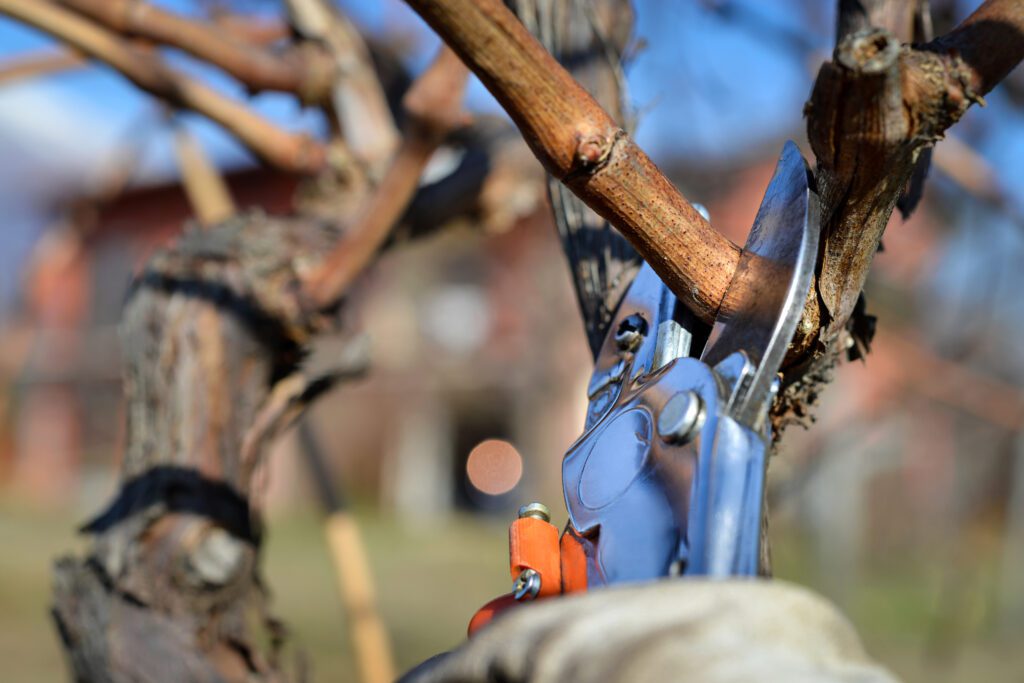
Pruning Vines in Winter
It’s time to start thinking about pruning. Late winter when temperatures are cold and the plants are still dormant is the ideal time to prune many different types of plants. The ideal day is sunny, dry, and cool to cold*.
Pruning requires good, sharp tools. Different sized material calls for different sized pruners. We carry Felcos, including the Felco F2 (a staff favorite!), which can cut material up to 1” in diameter. Larger sized material will require loppers, which are also available in our Garden Shop.
You want to slice – not mash – through any plant material. Ensure that your blades are sharp! We carry the very handy Corona sharpener in our Garden Shop. It is useful to keep it with your pruners so you can sharpen as needed.
Pruning also requires sterilization. Household rubbing alcohol is fine for sterilization**, some people will soak paper towels or cotton balls in it before heading out into the garden. For a smaller garden or fewer plants to prune, those individually packaged alcohol swabs can be convenient. Sterilize your pruners after every cut, to ensure that you aren’t spreading diseases around your plants and garden.
We have a large garden with a lot to prune. I like to start out by pruning vines first, as something of a warm up. Our garden has many grapes and a few American Wisteria.
Having my pruners + loppers, sharpener, and ample sterilizing supplies, I print out our Garden Guides from our website, pull on my gloves, and head outdoors. I walk to the vines, reread the guide again, and study for a while to determine exactly what needs to be removed, and what needs to be kept. Keeping my blades at a 45° angle, I like to prune a few things off then stand back and look at the whole plant before removing anything else. It’s a careful, quiet, garden meditation.
It might seem very scary to cut into a plant, as if you are hurting things that you love. But the reality is that many plants respond well to pruning, and vines in particular seem to exceptionally thrive when given this kind of care. In nature, all kinds of things can happen that would cause a particular section of a plant to be damaged, but what we’re doing when we prune well is a careful removal of material, at very specific times of the year, to minimize damage and communicate to the plant that it’s time to stop growing in this direction, and instead it is time to start flowering! If everything goes well, you’ll have a beautiful floral display, and in the case of edible plants, bountiful harvests later in the season.
*avoid pruning when it is 0°F or colder.
**there are exceptions, such as when pruning a fruit tree diseased with fire blight.
Garden Guide for American Wisteria
We will be offering a fruit pruning workshop with Randal on February 17th – for more information click here.
